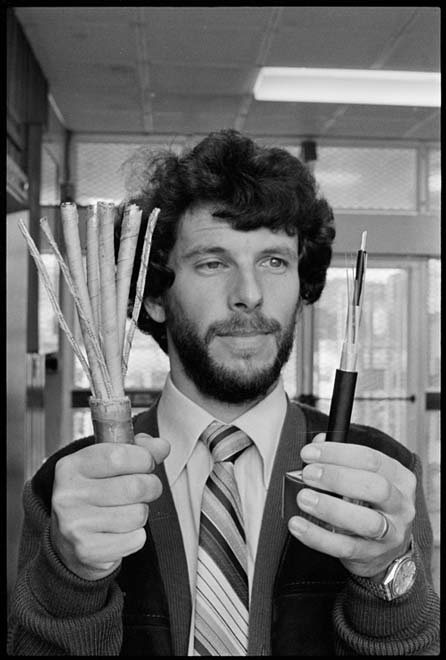
Post Office engineer Ian Harris holds up old copper co-axial cable with its multitude of wires, and new fibre-optic cable. After the Second World War an upsurge in subscriber numbers created huge network demands, especially in Auckland. This was met by underground co-axial cabling plus ‘microwave’ technology (with its striking-looking pylons), which could span difficult terrain in the middle-North Island. From 1983 the co-axial cable was replaced by fibre-optic cable with a much greater capacity to carry video, data and voice signals. Fibre-optic cable enabled later digital networks.
Using this item
Alexander Turnbull Library, Dominion Post Collection (PAColl-7327)
Reference:
EP/1983/0930/27
Photograph by Phil Reid
Permission of the Alexander Turnbull Library, National Library of New Zealand, Te Puna Mātauranga o Aotearoa, must be obtained before any re-use of this image.






Add new comment